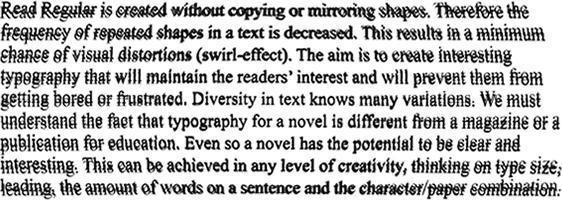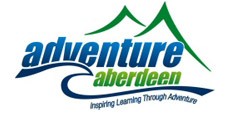End of Placement Reflection
I can’t honestly believe I have finished my placement. I am thoroughly gutted my time at Adventure Aberdeen has come to an end. This placement has been a huge eye opener for myself.
Although over the past six weeks have been full on and there have been tears sometimes from the amount of energy I have used and the lack of sleep I have had, I would not swap this experience: this placement has definitely changed me personally and professionally for the better.
Personally and professionally, this placement has definitely given me a wider view on outdoor education. With outdoor education growing into a much bigger part of teaching through the Curriculum for Excellence as well as it being something you need to be able to do to remain register on the General Teaching Council Scotland, I am glad I have had this opportunity to experience outdoor education. I have been able to go on amazing outdoor education sessions which I can definitely take into my own pedagogy including bikeability, scavenger hunts, wilderness skills, mountain biking (Go MTB scheme) to name a few. I have also been given the opportunity to challenge myself, try new things and overcome fears which I could easily be asked to do with a child/group as a teacher such as coasteering, surfing, canoeing, gorge walking, rock climbing and abseiling. All of these activities I couldn’t do without a qualified tutor but is now something I would definitely not say no to doing.
Professionally, I used to think that outdoor education in the rain was not a good idea especially with small children. I compared it with Sweden and did wonder how they managed in. Now after placement, outdoor education is a year round option in my opinion. Yes it can be cold but it snowed every day for my fifth week at Adventure Aberdeen and we never cancelled any of the sessions. Yes there were changes to the plan but we were still taking children outdoors. However, I now know that you just have to be prepared and not be afraid to change the lesson then we can always take education outdoors.


Flexibility around sessions/lessons is a huge thing I have taken away. In first year, I tried to stick to my lesson plan to the word most of the time. However, around 95 percent of the time with Adventure Aberdeen some part of the plan changed. However, there wasn’t a bad session I was out on but if the tutors were not flexible there would have been which is a key lesson I will take away.
(It might have been snowing but we were still outdoors and smiling!)
I have read and realised through hands on experience just how much children get from outdoor education. You may be teaching about one thing but the outdoor is so free that there are a number of different things a child can and will take away from the session and the tutors do not always realise how much depth and breadth a child can take from their sessions educationally and personally.
The biggest thing I have taken away, personally and professionally, from my placement is the thoughts I have been having around my future career. Although I know I want to work with children to make a difference for children. I am not so sure I know if I want that to be in a classroom. I am not naïve, I know this isn’t always a hands on, adventurous job: it has its own challenges and its own stresses. However, I also know that I have had a phenomenal time this last six weeks and I did not want to leave. I am now looking into doing a postgraduate degree in outdoor education after I finish my degree and do my probationary year, whilst also gaining some outdoor education qualifications in the meantime. I am not saying I would never teach, I do thoroughly also enjoy teaching in a classroom but this maybe something I still decide to do. But right now, teaching is looking like something I would come back to later after I have the chance to experience some more outdoor education. I now personally and professionally thoroughly have a massive love for outdoor education and the outdoors.
I have thoroughly enjoyed this placement and I am very grateful for all of the opportunities I have had through the learning for life module and Adventure Aberdeen. These six weeks have been phenomenal and I have done things I will never forget.









 ldn’t go particularly far or find particularly much. However, what I did find that we could discuss was road safety, road signs and markings such as yellow lines – discussing with the children what they thought they meant. I also thought of reading things like bus time tables as this is a skill that is probably going to be relevant to their lives and is also something no one ever taught me to do.
ldn’t go particularly far or find particularly much. However, what I did find that we could discuss was road safety, road signs and markings such as yellow lines – discussing with the children what they thought they meant. I also thought of reading things like bus time tables as this is a skill that is probably going to be relevant to their lives and is also something no one ever taught me to do. ciety. SOC 2-03a (p.283)
ciety. SOC 2-03a (p.283)








 builds good health in children. Whilst at St Ninians this has proved that even getting outdoor for a small part of the day has improved the health of children by reducing the amount of children with childhood obesity to zero. St Ninians have spent the last three years having a daily mile – this is where they get their children outside to walk or run a mile every day. The teachers choose when in the day they do it, whenever fits best with their timetable for the day. The only thing that stops the classes doing their daily mile is heavy rain or ice.
builds good health in children. Whilst at St Ninians this has proved that even getting outdoor for a small part of the day has improved the health of children by reducing the amount of children with childhood obesity to zero. St Ninians have spent the last three years having a daily mile – this is where they get their children outside to walk or run a mile every day. The teachers choose when in the day they do it, whenever fits best with their timetable for the day. The only thing that stops the classes doing their daily mile is heavy rain or ice.